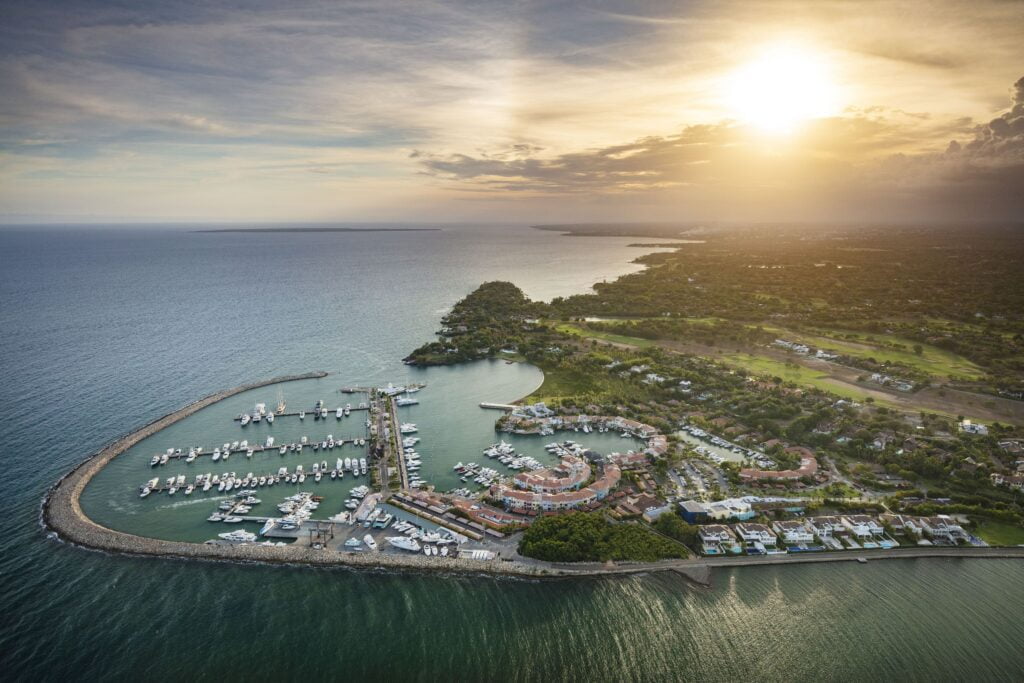What You Need to Know Before Traveling to Dominican Republic?
Traveling to new destinations can be exhilarating, but it’s essential to be well-prepared to make the most of your trip. This guide provides a comprehensive overview of essential information for those planning a visit to the Dominican Republic, ensuring a seamless and enjoyable experience.
Table of Contents
Overview
Planning a trip involves various aspects such as understanding the local customs, knowing the top attractions, and being aware of any safety precautions. This guide will cover all these facets and more, offering insights into what makes the Dominican Republic a unique travel destination.
Thesis Statement
This article will explore key information you need to know before traveling to the Dominican Republic, covering everything from historical context and current trends to practical tips and future implications. By the end of this article, readers will be well-equipped with the knowledge required for a successful visit.

This image is property of images.pexels.com.
Historical Context
Early History
The Dominican Republic shares the island of Hispaniola with Haiti. It was the site of the first permanent European settlement in the New World, established by Christopher Columbus in 1493. The country’s history is rich and complex, marked by a blend of indigenous Taíno culture, European colonization, and African influences due to the slave trade.
Independence and Modern Era
The Dominican Republic gained its independence from Haiti in 1844. Since then, it has undergone various political shifts, moving from dictatorship to democracy. This historical background sets the stage for the vibrant culture and resilient spirit that define the nation today.
Current Trends
Tourism Surge
The Dominican Republic has seen a substantial increase in tourism, driven by an array of attractions ranging from stunning beaches to eco-adventures. According to the Ministry of Tourism, over 7 million tourists visited in 2022, making it one of the most popular destinations in the Caribbean.
Sustainable Tourism
There is a growing focus on sustainable tourism practices. Initiatives aimed at preserving the natural environment, promoting local culture, and supporting community-based tourism are increasingly gaining traction. These efforts not only enhance the visitor experience but also contribute positively to the local economy and environment.
Key Concepts and Definitions
All-Inclusive Resorts
The Dominican Republic is famed for its all-inclusive resorts. These accommodations offer lodging, meals, drinks, and various activities for a single price, providing a hassle-free vacation experience. Notable areas with numerous resorts include Punta Cana and Puerto Plata.
Ecotourism
The concept of ecotourism centers on responsible travel to natural areas, focusing on conservation and involving local communities. The Dominican Republic boasts abundant opportunities for ecotourism, such as whale watching in Samaná and exploring the Los Haitises National Park.
Essential Travel Information
Visa Requirements
Depending on your nationality, you may need a tourist visa to enter the Dominican Republic. Citizens of the United States, Canada, and most European countries do not require a visa for stays of up to 30 days. However, always check the current regulations before traveling.
Health Precautions
Travelers should be aware of health recommendations, such as vaccinations and precautions against mosquito-borne illnesses. It is advisable to consult with a healthcare provider for up-to-date travel health advice.

Currency and Payment
The Dominican Peso (DOP) is the official currency, though U.S. dollars are widely accepted in tourist areas. Credit cards are also commonly used. Ensure you are aware of current exchange rates and carry some local currency for small purchases.
Destination Highlights
Punta Cana
Famed for its white sandy beaches and crystal-clear waters, Punta Cana is a top destination for tourists. It offers a plethora of activities, including water sports, golf courses, and luxury resorts.
Santo Domingo
As the capital city, Santo Domingo is rich in history and culture. The Zona Colonial, a UNESCO World Heritage site, is home to numerous historical landmarks, cobblestone streets, and vibrant nightlife.
Samaná Peninsula
The Samaná Peninsula is renowned for its natural beauty and outdoor activities. Visitors can engage in whale watching, hiking to El Limón Waterfall, and relaxing on secluded beaches.
Jarabacoa
Known as the “Dominican Alps,” Jarabacoa is perfect for adventure seekers. It offers activities such as white-water rafting, paragliding, and mountain biking, set amidst lush greenery and stunning landscapes.
Practical Tips
Language
Spanish is the official language of the Dominican Republic. While English is spoken in tourist areas, learning a few basic Spanish phrases can enhance your travel experience and interactions with locals.
Transportation
Public transportation options include buses, “guaguas” (small vans), and “motoconchos” (motorcycle taxis). Car rentals and private tours are also available, but driving can be challenging due to traffic conditions and local driving habits.
Safety
While the Dominican Republic is generally safe for tourists, it is advisable to exercise common travel precautions. Avoid displaying valuable items, be cautious in unfamiliar areas, and stay informed about local news.

Example 1: A Day Trip to Saona Island
Saona Island, a popular day-trip destination, showcases the Dominican Republic’s natural beauty. Organized tours usually include transportation, meals, and activities such as snorkeling. The island’s pristine beaches and clear waters make it a must-visit.
Data from the Ministry of Tourism indicates Saona Island attracts over 500,000 visitors annually, highlighting its popularity and appeal.
Example 2: Exploring Los Haitises National Park
Los Haitises National Park offers a unique ecotourism experience. Guided tours typically include boat rides through mangrove swamps, visits to ancient caves adorned with Taíno petroglyphs, and opportunities to observe diverse wildlife. This park underscores the country’s commitment to sustainable tourism.

Compare Different Points of View
All-Inclusive Resorts vs. Local Accommodations
| Aspect | All-Inclusive Resorts | Local Accommodations |
|---|---|---|
| Cost | Higher, but meals and activities included | Generally lower, pay-as-you-go for meals/activities |
| Cultural Experience | Limited to resort facilities | Greater interaction with local culture |
| Convenience | High, everything in one place | Requires more planning and flexibility |
| Impact on Local Economy | Mixed, large chains dominate | Directly supports local businesses |
| Safety | Generally high security | Varies by location |
Tourism and Environmental Impact
| Aspect | Mass Tourism | Sustainable Tourism |
|---|---|---|
| Environmental Impact | Often higher, can lead to degradation | Focuses on conservation and minimal impact |
| Economic Benefit | Primarily benefits large corporations | Supports local economies |
| Visitor Experience | Convenient, less educational | Provides deeper understanding of local culture |
| Long-term Sustainability | Often unsustainable in the long run | Aims for long-term preservation and benefit |
| Community Involvement | Limited | Higher, encourages local participation |
Impact Assessment
Economic Impact of Tourism
Tourism is a significant component of the Dominican Republic’s economy. Data from the Central Bank of the Dominican Republic shows that tourism revenue accounts for approximately 11% of the country’s GDP. This influx of money supports various sectors, including hospitality, transportation, and retail, creating numerous job opportunities.
However, there are also challenges associated with dependence on tourism. Factors such as natural disasters, global economic downturns, and health crises can significantly impact tourism numbers, posing risks to economic stability. Consequently, diversifying the economy remains an essential strategy for long-term resilience.
Environmental Considerations
The environmental impact of tourism cannot be overlooked. Popular destinations often face issues such as beach erosion, habitat destruction, and increased waste. Efforts towards sustainable tourism are crucial to mitigate these effects. Initiatives like eco-friendly resorts, community-based tourism, and conservation projects contribute positively to preserving the natural environment while still providing memorable experiences for tourists.
Future Directions and Implications
Predictions
The future of tourism in the Dominican Republic is likely to be shaped by trends in sustainable tourism and technological advancements. As global awareness of environmental issues grows, more tourists are expected to seek eco-friendly travel options. The incorporation of technology, such as digital guides and virtual reality experiences, can also enhance the tourist experience while promoting less intrusive methods of exploration.
Implications for the Local Community
Sustainable tourism practices have significant implications for local communities. By involving locals in tourism activities, there is potential for increased economic opportunities and cultural exchange. These practices help preserve cultural heritage and foster a sense of pride among residents. Moreover, sustainable tourism can lead to improvements in infrastructure and services, benefiting both locals and visitors.
What stands out most from this comprehensive guide to traveling to the Dominican Republic? How do these insights influence your travel plans?
Conclusion
To summarize, traveling to the Dominican Republic requires an understanding of its historical context, current trends, and practical travel tips. Whether you are interested in exploring luxury resorts or engaging in sustainable tourism, being informed will enhance your travel experience. Reliable data and credible sources have been used to offer a factual and comprehensive guide to help you prepare for your trip.
Your journey to the Dominican Republic promises to be an enriching adventure filled with vibrant culture, stunning landscapes, and unforgettable experiences. Consider what aspects of this guide most resonate with you, and how you can integrate these insights into your travel plans. What do you think will be the highlight of your visit to the Dominican Republic?
Featured Products – A Guide to Casa de Campo Resort and Villas
Dominican Republic | 2023 all you need to know before visiting!
